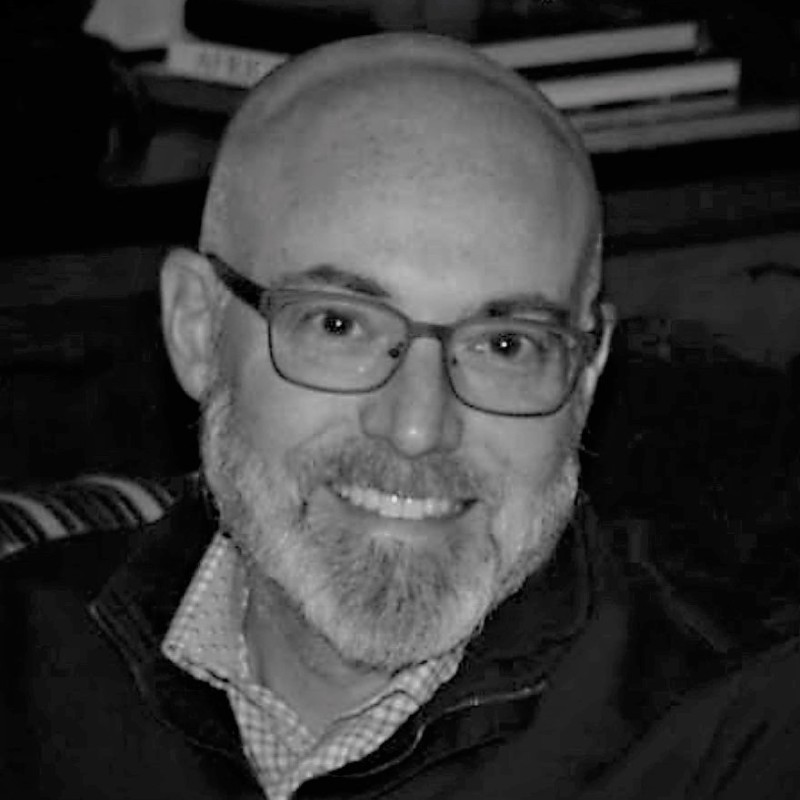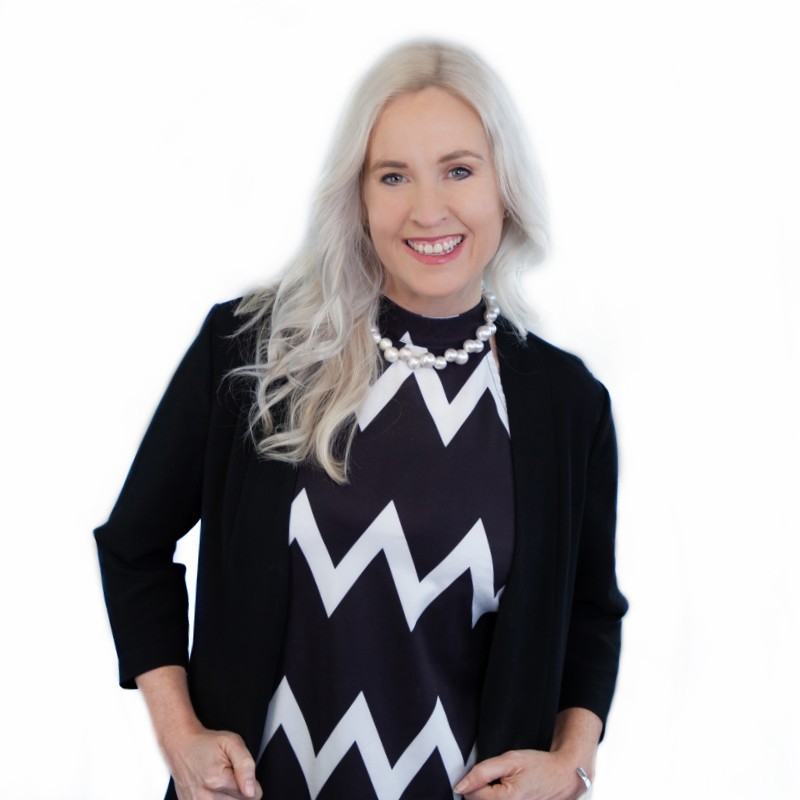You peer into the future and see a new world of exciting possibilities, but it also requires a new set of skills and an approach to work.
Then you look around at your existing team. What do you think?
Are these the people who will succeed in the next 5-10 years?
Bob Pulver has been helping organizations take a deep look into what it means to really prepare their current talent for the future.
Reaching that symbiosis
Anyone looking into the future sees a much deeper blend of technology and human ability. There is a lot to learn and implement around automation, AI, and many other exciting emerging technologies.
But to reach a place where humans and machines are working together in the best way takes a new approach. Technology can’t just come from the IT department, but is everyone’s responsibility.
Looking for fully-formed talent
When starting a new project, we usually don’t have time to wait for someone to build the skills necessary. We are looking for people who are ready to hit the ground running, which means we overlook our existing team members.
Finding internal talent is a much better and cost-effective strategy, but it takes a completely different perspective. You need to provide people with longer stretches of time where they can dedicate themselves to learning new skills and experimenting with new technologies.
This might mean allowing all people a few weeks a year to learn instead of working on revenue-producing projects.
The future of personality assessments
Bob talks about how personality and motivational assessments have matured a lot over the last 10 years. They’ve gone from being something interesting to actually quite useful as teams come together quickly to get a project done.
We chatted about how these assessments might be used in the future to help teams hit the ground running.
Links
Bob on LinkedIn
Bob on Twitter
Welcome back to The Digital Workplace podcast. Here we are with Bob Pulver as our guest. He is the Principal at Cognitive Path. Hey Bob, how is it going?
Doing great, Neil. How are you doing?
I’m doing excellent. We’re recording this on a Friday, which is always nice. Trying to live and stretch into the weekend. But we’re excited to have you here. You got a lot of cool experiences we’re going to unpack and get going on stuff. But first, let’s confirm you are a real human. Your capture question today Bob is, if you’re alone in your home and there’s a fire, and you get to grab one thing on your way out, what is it?
Just one thing? I guess it’s got to be my phone. I can’t go anywhere without my phone.
So, you can call the fire department on your way out, I guess, right?
I can do whatever I need to do. That’s my little pocket size computer.
It’s weird, though. I feel there was a time when ‘your phone’ was the key treasure. And now for me, it’s just become ‘a phone’. Like I don’t care which one it is. I can get all my data no matter which phone it is, just give me one. How do you feel about that? Are you very attached to your particular one?
I’m down to one phone. I recently converted. After over a decade of Android phones, I did become an Apple convert. It has simplified my life because my entire immediate and extended family are all on iPhones. So, FaceTime has become probably my most used new app, which is great. And I got to use Clubhouse for the last five months, which has actually been really good.
Yeah. I didn’t use any iPhones before. And then we wanted to get on Clubhouse. So, I was like, alright, well, that’s the only way to do it. But now I use an iPhone. I can’t say it’s amazingly better. But it does simplify parts of life for sure.
When I was at NBC Universal, I did use two phones for the first time, which I wasn’t sure I was going to want to do. But the fact is, all the cyber experts that I talked to were all carrying two phones, and there’s got to be a reason for that. And I didn’t want the company to have access to remotely wipe my phone for some unknown reason. And so, I didn’t mind having both. And I was always familiar with iOS because I used it for work. So, it was an easy, easy transition. Yeah.
There you go. I don’t know, like in terms of my answer to what would I grab, if I’m alone, it’s mostly like all of this stuff. I would love to have most of these. At least, I would want a picture of all the books that are here, so we know how to replace them. I got a couple of trinkets that are from my grandparents and things. I’ve never told anybody I got a piece of wood in the background there. That’s something my great grandfather whittled from one piece of wood. So, it’s like a wood chain.
That’s a great little piece there. That’s awesome. That’s funny. I have some stuff from my grandparents as well. I have some old whiskey jugs and stuff like that. I’m a big whiskey guy. So, I don’t even know how old that is. But yeah, I got a couple random things like that as well.
Yeah. That stuff’s hard to replace.
Yeah, exactly.
Well, cool. So, you’re approved, Bob. You brought up the whiskey bottle, so that’s the real thing. Phone was like, I’m not sure I mean. A computer also would be like I’m not sure. So, you talked about NBC Universal. You actually have a very, very interesting, professional career. So, why don’t you give us the short version of that?
Yeah, sure. So, I worked for IBM for the bulk of my career in a lot of different roles, across process transformation, I worked in sales transformation, I worked in what we used to call social business. So, before it was digital transformation, we called it social business. I had some client-facing roles, I worked closely with IBM Research in a technical pre-sales role, did some consulting for IBM, market intelligence. A lot of that was all around the social analytics space. So, really understanding people’s behavior, whether they’re consumers or employees, etcetera, across different ecosystems. Did a lot of crowdsourcing and collective intelligence kinds of projects, either exploring different methodologies to improve collaborative decision making or just to get people more involved with either innovation or project management, product management, and things like that.
And then when I went to NBC, I focused on strategy and operations. So, basically executive staff to the Global CIO, looking at how to build automation strategy, how to get people more engaged across silos, because that organization was siloed by design across film, news, TV, etcetera. Again, there was a collective intelligence kind of theme there, but also just general knowledge sharing and talent mobility, those are the kinds of things that I was interested in. And then also, we did some work around software engineering.
So, media companies these days, as much as anybody, are technology companies. And so how do you beef up that engineering and product management muscle? Whether it’s products or cloud or cybersecurity, how are you positioning yourself for the future and controlling your own destiny as you develop a lot of software, applications and services and things like that. So, I really got into a role where I was doing a lot of talent acquisition and thinking about internal mobility, upskilling, reskilling, all the things that are part of the future of work trajectories that we need to think about.
So, that led me to start this Cognitive Path company, which is basically an advisory to whether you’re focused on talent, or you’re trying to just leverage automation, AI, and analytics, to improve your operations and stay competitive. These are things that are going to affect every industry, and you’re going to fall behind and you’re going to be in jeopardy or the business itself will be in jeopardy if you don’t embrace some of these technologies.
I’m a little curious. You have exposure to so many different types of technologies in your career. Lots of different people, lots of different ideas that went through it. Now that you are starting this new venture, what was it about this convergence of technology and talents and these opportunities? Why was this the one thing you wanted to center on?
Well, I saw a lot of these trends. I think about not just trends but the intersection of trends. So, that’s when I put my amateur futurist hat on, and I’ve taken some strategic foresight programs through the future school. And I’ve just been fascinated with how people plan for the future and take a systems-thinking approach. I’ve had many roles where I’ve been a square peg in a round hole. And so, I started thinking about that. I started thinking that I’ve had success in my career but there’s a lot of people who haven’t. They just are not aware of their own potential, and no one has shown them the path forward.
The other thing is the last role I had at IBM was really leading this entrepreneurial community where everyone was trying to come up with novel solutions using the IBM Watson cognitive services. So, how do you combine some of those APIs in unique ways to create a novel solution? And so, some of those were focused on in the talent space. And I just thought what could be more impactful than having technology help people find more meaning or become more self-aware of their own capabilities, whether that’s personalized learning paths, or it’s just understanding how to be a better colleague and teammate or leader, technology can help you do that.
And then you get into some of the automation capabilities. As you move up that automation maturity scale, if you will, from Robotic Process Automation, RPA, up to intelligent and even cognitive automation. You’re talking about machines doing things that people would have never thought a machine could do. Now you’re talking about not just routine mundane tasks that affect perhaps only certain roles that you would expect where they’re doing repetitive things. Now, it’s affecting knowledge, work. Now, it’s affecting white collar jobs.
And so, I just like the combination of that technology with talent, letting people do the things that they’re really good at and let the machines do the things that they’re really good at. And you merge those things together and you have this ideal symbiosis of, where the term ‘augmented intelligence’ really comes to provide a lot of value, right? You’re not removing humans from the loop, right? You’re still involved in final decision making and things like that. Now, the machines may still learn as they go and take on more and more tasks, but I think there’s always going to be a need for it for humans.
Yeah, I sense that a lot in terms of like, when people say, ‘Hey, the machines aren’t going to take your jobs. It’s going to be fine. You’re going to be okay.’ There’s always that little asterisk like ‘for now’. All the jobs we can think of that we’re doing right now they’re not going to take tomorrow. Eventually they will, but hopefully. It’s on us to build those new jobs and the new experiences that will continually push us farther ahead. I feel that’s one way where we are not keeping up pace, in terms of like, we’re just still digging our feet and saying, ‘No. Humans work. We’re going to keep doing this thing, and not going to upskill ourselves as we go through.’
Yeah. I also think that there’s technology that affects talent, affects us individually. And then, there’s technology that affects teams and organizations, and I saw a lot of this at IBM. So, it’s interesting that it’s only really now becoming more mainstream, things like social network analysis, people analytics, these aspects of future of talent, future of HR, I saw these in the mid-2000s. It was probably 2007, 2008, 2009, at the beginning of what we used to call social business, where people were really starting to embrace and digitize and become more social and digital savvy, I guess. But just understanding relationship graphs, and understanding where are my experts, where are the skills, and those kinds of things were all precursors to talent mobility today, but they also improved methods of just disseminating knowledge. So, I think a lot of this is finally getting the recognition it deserves because it’s providing all this insight that you just didn’t have before.
Bob, I want to talk about a question that’s been bothering me lately. It’s that, I feel when we’re looking for talent, and we always put in that term, I’m looking for somebody who’s outside my team, somebody I don’t know yet. It’s almost always in that terminology. And we’re usually always looking for a fully formed individual. Like somebody who’s going to come, they got to have these skills, they got to have these things that are there, and that makes it, one, hard to find people. Because there are a ton of fully formed, high functioning individuals that have all the skills that you need out there. So, there’s that tension there. And then there’s also looking around at the people that you know, people you’re working with, and you’re like, ‘No, no, no, no, no, no.’ There’s this idea in our head, ‘I don’t know how to upskill those people, or reskill,’ or whatever term you would prefer. So, walk us through the tension of what you’re seeing from your side.
Yeah, this is a really important one. So, one of the things that I actually experimented with at IBM, and again, it’s now becoming, you know there’s unicorns in this space, but within HR tech, there’s this concept of talent marketplace, right. And so, this is just like how you have gig marketplaces externally like Upwork, Fiverr, Toptal and places like that, you’ve got internal talent marketplaces as well. Now, a lot of them do have the capability where you could use it for an entire talent ecosystem, meaning you could go out and start to look at a broader talent or a global talent pool at this point, right, where you could look across your internal organization, maybe in your partner organizations, but you could also look for independent contractors or consultants and things like that. The only way you can really make sense of that is if you know the skills are all tied into that.
And so, I think where this space is evolving is, once you have all that information, those things are relatively mature and you can see both internally and externally, you can start to make decisions about, ‘Well, I’ve got a six-month contract, or a six-month project or product. I’m going to need this set of skills for the duration. I’m going to need this set of skills for half that or, and this is how I see the strategy evolving, and I’ve got to evolve my talent along with that, so we don’t miss a beat.’ I think tools like that or platforms like that will get more intelligent to allow you to make some contextual decisions about who you hire when. But there is a big push, if you think about the cost of hiring an external person versus finding talent internally who has the potential to succeed in the roles of the future. So, this is a big thing for automation as well.
I’m going to automate a specific set of tasks and processes. These are the roles that typically perform that function. Do these people have the potential, once I automate that, to be moved into another area? So just from a cost standpoint alone, you would save a lot of money if you found resources internally. Now, that’s easier said than done, right? You’ve got to overcome some cultural barriers where managers or leaders might be hoarding talent, or they’re incentivized in the short term, they’ve got goals to meet, they can’t just let somebody go. You can’t just let your admin go into a coding boot camp for six months. You’ve got deliverables, right? And so, you’ve got to strike that balance between organizational goals and objectives and what’s in the best interest of the company along with the goals and objectives at a team level. So, at some point those things need to get in sync, if they’re not already, which, of course, they should be.
But there’s a lot of people who are underutilized, right? In addition, to people who are unemployed, there’s underemployed and there’s people who are not aware of their own potential. So, how do you tap into that? Whether it’s through assessments or other means, you’ve got to see what’s in your toolkit already. And you’ve got some people who, maybe were going to leave because they’re not happy, or because they’re bored, or whatever it is. But that’s why with some of these people analytics and social listening and all these things, you can take a pulse, an ongoing pulse of the organization to understand how to move the pieces around, because this is chess not checkers, right? This is really complicated, and you’ve got to think multiple moves ahead.
Yeah, it is extremely complicated. I love in a lot of ways the push towards more project-based teams where it’s more like, hey, this is the task I got to get done. I put together a team for six months, two years, three years, and put all those people together. And let’s get going. But I can’t wait for somebody to be developed into that role. It’s like we got to go. We got to hit the ground running. We got to move. So, if I have a smaller company, I need all those people to be ready to go. But yeah, trying to figure out how do you give people space to do that learning, to say, hey, I need to take a break from these big projects, to take six months and do some kind of a re-skill or a boot camp like that, that’s tough.
Yeah, absolutely. So, there are some folks like John Boudreau who have talked about working as ‘Work without Jobs’. It’s a provocative thought, right. But ultimately, if you had everybody, if you could do just in time staffing, and you had the right visibility to people’s availability, their skills, how their work style is, those kinds of things, you could potentially, dynamically, compose and decompose and then recompose teams like that. Dave Gray talked about, I think you call it Podular Design, right? That was like a decade ago I feel, where he talked about where people could just move from pod to pod and just get stuff done. But how do you change the incentive structures? It completely breaks a traditional corporate hierarchy, of course, right? So, who’s got the appetite for that, especially the larger organization, right?
And to be able to tell people, ‘Look, you’re responsible for delivering results being on a project or a team for this amount of time. But we’re also going to expect you to take 20% of your year or 10% of your year, of this time, to not be working on projects and go out there and learn something new, and to figure out something else, and to be able to build that into. Alright. Well, that’s just a little bit. I sense this rise perhaps in when it comes to personality tests, motivational tests, assessments that come out there. I feel we had hit a peak back with the DiSC, and the Myers-Briggs stuff that came out, the 90s type thing that was there, and then everything plateaued for a while. And now you see a little bit of resurgence of these tools now that we’re realizing, okay, maybe we can go a little deeper, or maybe we can have a little more use of those. What do you see from your angle from those types of self-assessments?
So, I’ve taken a lot of these myself over the last six months as I’ve been doing my own job search. And so, I felt it was a perfect opportunity, as I’m recalibrating the next step in my career, to really just gain a little bit more self-awareness, right? I haven’t always had consistent feedback about my performance. I mean, I know people really like working with me and I know the things that I’ve been exposed to. But, without that ongoing feedback, it’s hard to continually course correct and know that you’re growing and improving, right.
So, I’ve taken a lot of these different assessments. Some of them were DiSC assessments, but I’ve taken a lot. So, I have Ray Dalio’s ‘PrinciplesYou’. I took that one. I took one from Plum. Plum.io was really interesting. I forgot how long it took me to take that assessment, but there were at least 10-12 different categories of things that I hadn’t even really thought about. Like, if you just sat me in a room and said design an assessment, I don’t think I would have come up with a laundry list of categories. But it’s everything from how you deal with conflict, how you deal with being a mentor or a coach, your work style, a little bit of personality, do you like working alone versus in a team, where do you thrive.
So, I think these things are incredibly important. And they’re all very constructive in their criticism, not criticism, but here are some things that you can work on, here are some things you should look for, even the type of organization that you should look for. Because even when you say, ‘Oh, I want to go work for a startup.’ Well, what do you mean? Do you want to go work with three people before you even have a website or a mission statement? Do you want to work for somebody that’s already got through their series C funding round? Because it could be completely chaotic, and you could wear 10 hats versus a clarity of mission, earning a salary instead of sweat equity.
There’s a lot of differences in where you want to work. And so, I think the assessments are incredibly valuable to understand where to put your chips in terms of your job search, but also, just where should I prioritize my own learning, my own growth. And then some of it is around, from a talent acquisition perspective because that’s where I’m focused on right now, how do you mitigate bias in the hiring process? How do you improve the candidate experience? How do you get quality over quantity in your pipeline of candidates? And so, I think these assessments can be incredibly powerful.
Now, I don’t necessarily have a favorite or one that checks all the boxes. I’m in the middle of drafting a blog post about all the ones that I’ve taken and how valuable I think they are in aggregate. I’ll probably cherry pick what I liked about each one. And so, there’s not one that I would say, ‘Okay, well, we’re going to use this one and only this one.’ But I do think it’s valuable to gather that information upfront. You could really almost eliminate your whole initial screening process if you ask the right questions, and you have technology that can actually interpret those answers.
So, not just how you answered it, but what can I infer from the content of your responses about how you work. So that I think is valuable because you’re almost doing two assessments at once, and providing feedback, both to the hiring team as well as to you personally. So, even going through it is a learning experience for the candidate.
Yeah. I also like the maturity of a lot of these assessments that have come up. Like you said, they have grown and there’s much more insights you can get from them than you did before. And so, we’re experiencing that. And I think the whole nature of moving into a digital workplace also changes things because it used to be, ‘Hey, let’s all do this test. We’ll spend a day debriefing it.’ ‘That was really cool, insightful.’ ‘Oh, Bob likes these types of things. All right, that’s cool.’ And then maybe one day they trigger something in their mind, ‘Oh, maybe that’s why he’s like that.’ But that’s pretty much the extent of it. But now, when in these digital platforms, it’s like, if I know, okay, I’m working on a team with Bob, immediately I can pull up his profile, which almost becomes more like a user manual. Like this is how you should interact with Bob. These are the types of messages that he likes. This is his preferred communication style. This is his preferred leadership style. And you could even customize a lot of that as I learn new things about you. That’s tough stuff. It typically takes a year or two years to learn about somebody and to be able to jump into those things, and not assume that’s always going to be like that but to have that kind of thing is great. But one point you brought up too, is the interoperability of all these tests. It’s hard to get everybody to use the same one. And that’ll never happen. Because each one has its own strengths and weaknesses. But it would be nice, even before I’m going to hire somebody, I can see their profile as it comes through and know ahead of time if they’re going to work on my team, or just some kind of universal standards around that. So, I don’t think it’s going to happen but there’s definitely merit in that idea, too.
Oh, absolutely. Absolutely. Yeah, it’s hard because you’re trying to put the right puzzle piece into the bigger puzzle, right? And so, you’re not just hiring a warm body. You’re not just hiring that person in isolation. They’re going to be working as part of a team. The team chemistry needs to work. So, it needs to be a culture add. I like the phrase ‘culture add’, not ‘culture fit’. And so, how does this person fit in. I was particularly interested in Ray Dalios because I’ve read his book ‘Principles’ and how he thinks about and codifies a lot of what he learns into those kinds of structured diagnostics. So, it’s some really interesting work going on there.
Very cool. Well, Bob, we have reached the end of our time. It has been a fascinating discussion. I’ve really enjoyed it. Thinking about it I feel like you’re someone who’s living in the present and you’ve got a foot in the future in figuring out how all this works as people get through it. Where can people go if they want to learn more about what you’re doing?
Just hit me up on LinkedIn. It is probably the easiest. Or [email protected], if you want to talk about what Cognitive Path can do. And yeah, I’m on all the socials as well. You can find me on Clubhouse, Twitter, Instagram.
Yeah. We met on Clubhouse, right? That was the opportunity that came through. Well, cool. And you talked about LinkedIn. As we close off, I wish they were a little bit more ambitious. Because they could be a big part in leading the way in some of these talent conversations and things.
I don’t get it. I don’t get why they missed the wall. It was theirs to just own. I don’t get it. It’s fascinating to me. They’ve left the opportunity for a lot of other people. There are some amazing startups doing some excellent valuable work and it’ll be interesting to see how that market starts to consolidate over the next couple years.
Yeah, that’ll be exciting. Well, cool Bob. Thanks for being on the show. We look forward to continuing to listen to you in different parts and bring you in for new conversations.
Excellent. Thanks so much, Neil. This was great.
Experienced workplace strategist helping business, technology and talent leaders plan for how emerging technologies and market trends will impact their organizations. Held diverse advisory and consulting roles at global enterprises driving transformation and solving complex challenges with active listening, empathy and systems thinking. Advocate for combining human potential with machine intelligence to optimize decision-making, improve user experiences, and change behavior.
The future of work is driven by people, augmented by technology. Invest in the power of human potential.
Expertise in: Talent ecosystems, enterprise innovation, employee experience, social analytics, strategic planning, intelligent automation, artificial intelligence












